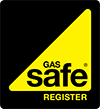Now the weather has made a turn for the worst, causing temperatures to plummet below freezing on a night, it’s time to make sure you are getting an efficient amount of heat from your radiators. There are various ways in which you can do this yourself at home, or if you feel you do not have the confidence to carry out our advice, you can always hire a heating engineer. They will be able to service your radiators and boiler when they come to visit your property, if it hasn’t already been done this year.
Your radiators are heat emitters for your heating system at home and are available in all different shapes and sizes from the basic cast iron radiator, standard panel radiator single or double as well as designer radiators.
Firstly, to understand how to make sure your radiator is working efficiently, you need to understand how a radiator heats individual rooms around your home.
A radiator works when connected to your heating system, which allows hot water to be pushed in at the left hand side. Next, the water is circulated through all the fins creating a heated surface, and then pushed out the right hand side of the radiator, slightly cooler from when the water first entered the radiator, this is then circulated back to your boiler.
Radiators heat the room through convection, which means cool air travels underneath the radiator, then travels further up through to the radiators fins. The large surface area of these speed up the heating process. The warm air is then pushed to the top of the room which forces the cold air down to the bottom of the room, as the cold air sits on the floor of the room the cold air is drawn into the bottom of the radiator and the air is heated. The circle begins again, resulting in heating your room.
The radiator thermostat is a room sensor for your radiator. This thermostat acts as a controller for the temperature emitting from the radiator its self. The sensor will register the air temperature in the room and will adjust the hot water flow into the radiator accordingly. You will see numbers on the radiator sensor, these represent the room temperature settings that will activate the sensor to reduce the hot water flow or turn it off. No.1 is set to 13C-16C, No.2 is set to 17C-19C, No.3 is set to 20C – 23C, No.4 is set to 24C – 27C and finally No.5 is set to 28C – 29C.
A quick and easy way to check if your radiators have any air in, is to place your hand on or near the radiator (careful don’t burn yourself) and check for any cold spots. If you feel a difference in temperatures, you will need to consider bleeding your radiator to allow any air to escape.
To do this, place a radiator key or small screwdriver into the radiator bleeding valve, turn the valve to the left to open the valve. You will hear air rushing out. For best practise, place a cloth or rag over the valve to stop water rushing out which will help prevent spilling. When water starts to pour out of the bleed valve, you will then know that all air is out of that one radiator
You should go round the full system and bleed each radiator individually starting at the radiator furthest away from your boiler.
If your room is very cold in comparison to others in your home, it may be because your radiator is too small for the room. To find this out you will need to do some calculations to measure what output you need from your radiator to heat your room. The output is measured in BTU’s (British Thermal Units). You will need a BTU calculator, which will take into account different factors such as windows (single or double glazing), position of radiator in the room etc.
Generally, you will find most radiators are located underneath windows. You need to be careful with positioning of the radiator not to block heat emitting from the top with draped over the radiator. This would cause heat to be pushed into the window void behind your curtains cooling the hot air against the cold glass. For better results, fit foil behind your radiators when fitting them, this will push the heat away from the window and into the room.
An old heating system can affect the output of heat from your radiators due to insufficient controls. The reason for this, is the valves will become corroded if the system hasn’t been flushed and maintained causing them to fail or breakdown. If the radiator sensor are old, it will have an impact on the regulation of hot water flow.
You will also need to look at the boiler controls, are these maybe out dated and preventing you from controlling your boiler in an efficient way. Look at upgrading your radiator thermostats and boiler controls so you have full up to date control over your full heating system.
If you have tried all of our other suggestions and your rooms are still cold, you may want to look into replacing or adding additional radiators in those cold rooms. Before taking this step, make sure you have done the above. If you have discovered any issues. You will then need to check with a heating engineer to see if your boiler has the capacity to serve extra heat emitters. When purchasing a new radiator you need to look at what BTU’s it pushes out instead of size. Modern radiators on the market today are now designed with efficiency in mind as well as being compact in size.
We hope by answering the above questions and carrying out what we have advised has helped you discover any issues with your boiler. If you need further help, one of our helpful heating engineers from Plumbcare.com can be of service.
Complete the form below and one of the Plumbcare.com team will get back to you as soon as possible.





